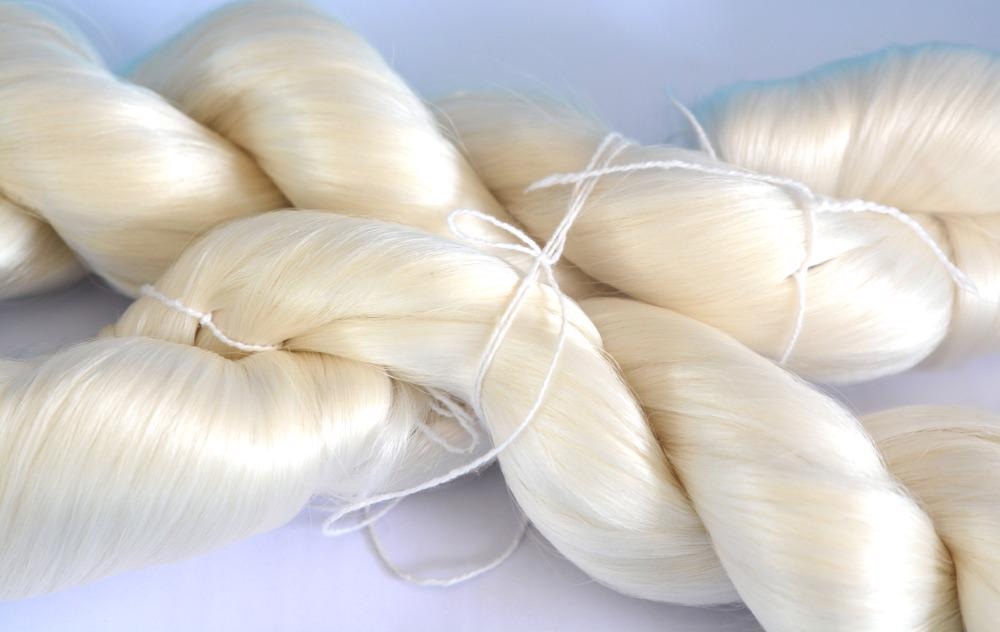 By Surbhi JainReviewed by Susha Cheriyedath, M.Sc.Feb 28 2022
By Surbhi JainReviewed by Susha Cheriyedath, M.Sc.Feb 28 2022In a review article recently published in the journal iScience, researchers discussed the recent development of bioinspired structural and functional materials based on silk.

Study: Silk-based bioinspired structural and functional materials. Image Credit: jayk67/Shutterstock.com
Background
Bamboo, nacre, bone, polar bear hair, and skin, as well as spider silk, have exceptional mechanical qualities and some unique functions, owing to their multiscale architectures. Due to their high demand in a variety of important fields, they can be used for the development of high-performance functional and structural materials.
Significant development has been made in bioinspired materials during the last few decades. A number of approaches have been thoroughly investigated, ranging from component selection through biomimetic structure design, fabrication procedure, and application demonstration.
It is also important to note that high-performance biological materials are often made up of biodegradable and sustainable components. As a result, employing biopolymers as building blocks to make bioinspired materials appears to be an appealing alternative. Many biopolymers have been studied to generate composites with biomimetic architectures. Among them, silk stands out because of its great mechanical qualities, adaptability, and biocompatibility, making it a viable raw material for creating a variety of biomimetic systems. Silk-based bioinspired functional and structural materials have recently gotten a lot of attention.
About the Study
In the present study, the authors presented an overview of current progress in silk-based bioinspired structural and functional materials. The study first provided a quick overview of silk, including its origins, characteristics, extraction, and various forms.
The potential of natural biological materials for the development of high-performance materials with a wide range of applications was reviewed. The authors also discussed the advancement of bioinspired materials by replicating their chemical compositions and hierarchical layouts.
Silk-based structural and functional materials inspired by certain common natural biological materials, such as nacre, bone, polar bear hair, and skin, were presented and explored in detail in this study. The contribution of artificial silk fibers made from waste silk or the ones with mechanical strength superior to native silk towards increasing raw material supplies was overviewed.
The challenges associated with the structural design and bulk production of silk-based bioinspired materials over the last few decades were also reviewed. The authors also presented a perspective that combined reductionism and integratism. The manufacturing and application of silk-based materials that imitate four common biological materials -bone, nacre, skin, and polar bear fur - were summarized. Finally, the authors discussed this field's current obstacles and future opportunities.
Observations
Based on several studies, the researchers observed that the polar bear hair-like fiber was successfully created, with a core of porous silk fibroin aerogel and a shell of CA/PAA. The biomimetic composite fiber was found to have an 86% porosity and a tensile strength of 2.6 0.4 MPa.
More on AZoM: Self-Cleaning, Dirt-Repellent and Degradable Bioplastics
One of the studies showed that as compared to pure polymer, using just 1% silk fiber increased tensile strength and modulus by 300% and 612 %, respectively, yet the composite film remained flexible and transparent. It was also determined based on many studies that after 1000 compression cycles, the SCP gel was able to maintain 88.8% of its maximal strength despite a 40% deformation.
The authors observed in one of the studies that a 37-m-thick membrane with a modulus of 7.7 ± 0.2 GPa and a toughness of 1.7 ± 0.3 MJ/m3 was roughly three times higher than a pristine self-assembled SNF membrane (2.25 ± 0.25 GPa).
Furthermore, it was observed in some studies that the tensile strength of the GO/SNF/GO membrane increased from 52 to 364.2 MPa, and the toughness improved from 1.01 to 12.51 MJ/m3 when compared to the GO membrane. In comparison to collagen scaffolds (0.034 MPa) and commercial calcium phosphate scaffolds (<5.0 MPa), such macroporous scaffolds had average compressive strengths of 14 MPa and modulus of 175 MPa.
Spider silk had a stiffness value of 10-12 GPa, a tensile strength in the range 0.9-1.4 GPa, a breaking elongation of 30-60%, and toughness in between 160 and 240 MJ/m3.
It was demonstrated in one of the studies that a millimeter-thick synthetic nacre was created which closely resembled natural nacre in both chemical composition and hierarchical structure. In the case of bone-like composites, genetically modified silk protein fused with the HAP binding domain VTKHLNQISQSY was shown to induce biomineralization and, as a result, increased osteoinductivity.
Conclusions
In conclusion, this study reviewed the recent development of silk-based bioinspired structural and functional materials. It was observed that in bone tissue engineering, the natural arginine–glycine–aspartate motif found in certain wild silk could increase cell adhesion and proliferation. It was also determined that maximizing the benefits of silk through directional optimization or selection of its properties could provide a robust material foundation for future silk-based and functional bioinspired composites.
The authors emphasized that with the challenges of producing high-performance bioinspired materials in bulk, scientists and engineers require a systematic methodology to deal with the structural complexity of bioinspired materials whose dimensions span the nanoscale to the macroscale.
Overall, the authors believe that this path will undoubtedly be followed in the creation of silk-based bioinspired functional and structural materials.
Disclaimer: The views expressed here are those of the author expressed in their private capacity and do not necessarily represent the views of AZoM.com Limited T/A AZoNetwork the owner and operator of this website. This disclaimer forms part of the Terms and conditions of use of this website.
Source:
Xu, Z., Gao, W., Bai, H., Silk-based bioinspired structural and functional materials. iScience 103940 (2022). https://www.sciencedirect.com/science/article/pii/S2589004222002103